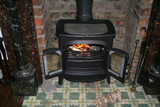SafetyBlog
What Is Hazard Insurance? A Homeowner's Guide to Hazard Insurance
If you're planning to buy a home in the near future, you'll need to secure an insurance policy. Most mortgage lenders require insurance. Otherwise, they'll reject your applications. There are different forms of insurance, however, including hazard. What is hazard insurance exactly, and does it offer a sufficient amount of protection?Overview of Hazard InsuranceHazard insurance is designed to protect against financial losses associated with natural disaster- or hazard-related damage to a home. Ma
…
Feb 21st 2022
Carpal Tunnel Syndrome vs Cubital Tunnel Syndrome: What's the Difference?
Repetitive strain injuries (RSIs) are common in the workplace. Research conducted by the U.S. Occupational Safety and Health Administration (OSHA) shows that nearly 2 million workers in the United States sustain an RSI during any given year. While there are dozens of types of RSIs, though, two of the most common include carpal tunnel syndrome and cubital tunnel syndrome. What's the difference been carpal tunnel syndrome and cubital tunnel syndrome exactly?What Is Carpal Tunnel Syndrome?Carpal tu
…
Feb 17th 2022
Eyestrain: A Common Problem for Office Workers
As an office worker, you need to take precautions to protect yourself from eyestrain. Eyestrain is a common condition from which office workers suffers. Also known as tired eyes, it involves symptoms such as eye dryness, redness and fatigue due to prolonged staring. When you stare at a computer screen for long periods, your risk of eyestrain increases. Fortunately, you can prevent eyestrain by taking some basic precautions.Position Your Computer ScreenThe height of your computer screen can affec
…
Feb 15th 2022
5 Facts About Carbon Monoxide You Need to Know
What safety precautions have you taken to prevent carbon monoxide in your workplace? The Occupational Safety and Health Administration (OSHA) has a permissible limit of 50 parts per million (PPM) for carbon monoxide exposure over an eight-hour period. Exposure to more PPM during this length of time may lead to illness. Below are five facts about carbon monoxide that you need to know.#1) Produced By Gas-Burning AppliancesCarbon monoxide is produced by gas-burning appliances. Furnaces, stoves and
…
Feb 14th 2022
5 Safety Tips to Follow When Using a Wood-Burning Stove
Is your home equipped with a wood-burning stove? Like a fireplace, you can use a wood-burning stove to build fires. It's a great way to heat your home without turning on your furnace or heat pump. Failure to take certain safety precautions, however, may result in a house fire. Below are five safety tips to follow when using a wood-burning stove.#1) Ensure VentilationWood-burning stoves require ventilation. Your woo-burning stove needs to be connected to your home's exterior via a chimney or flue
…
Feb 10th 2022





